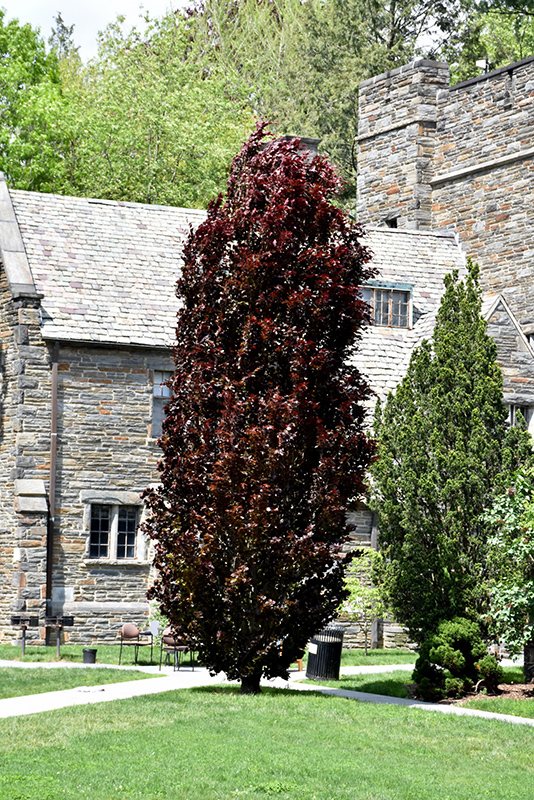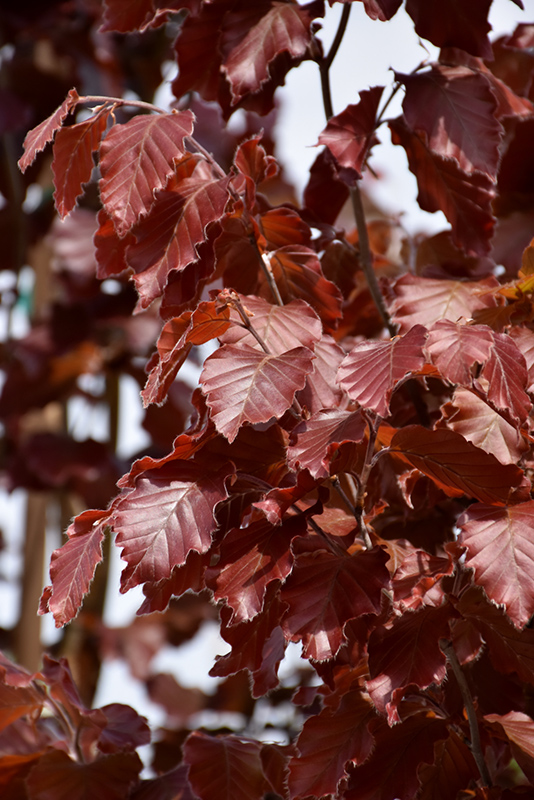Beech, Red Obelisk Fagus sylvatica 'Red Obelisk' Height: 35 feet Spread: 12 feet
Sunlight:
Hardiness Zone: 5a Other Names: Common Beech, European Beech Description: A narrowly columnar tree with deep purple crinkled foliage all season long, excellent for color, articulation or as a tall screen; Grows best with rich soil, maintaining deep watering, and protection from strongest winds. Ornamental Features Beech, Red Obelisk is primarily valued in the landscape for its rigidly columnar form. It has attractive burgundy deciduous foliage. The serrated pointy leaves are highly ornamental and turn an outstanding coppery-bronze in the fall. However, the fruit can be messy in the landscape and may require occasional clean-up. The smooth silver bark is extremely showy and adds significant winter interest. Landscape Attributes Beech, Red Obelisk is a dense deciduous tree with a narrowly upright and columnar growth habit. Its average texture blends into the landscape, but can be balanced by one or two finer or coarser trees or shrubs for an effective composition. This is a relatively low maintenance tree, and is best pruned in late winter once the threat of extreme cold has passed. It is a good choice for attracting birds to your yard, but is not particularly attractive to deer who tend to leave it alone in favor of tastier treats. It has no significant negative characteristics. Beech, Red Obelisk is recommended for the following landscape applications; Planting & Growing Beech, Red Obelisk will grow to be about 35 feet tall at maturity, with a spread of 12 feet. It has a low canopy with a typical clearance of 3 feet from the ground, and should not be planted underneath power lines. It grows at a slow rate, and under ideal conditions can be expected to live to a ripe old age of 100 years or more; think of this as a heritage tree for future generations! This tree does best in full sun to partial shade. It does best in average to evenly moist conditions, but will not tolerate standing water. This plant should be periodically fertilized throughout the active growing season with a specially-formulated acidic fertilizer. It is not particular as to soil type or pH. It is somewhat tolerant of urban pollution, and will benefit from being planted in a relatively sheltered location. This is a selected variety of a species not originally from North America. Special Attributes Flowers are insignificant. Few to Some Small three sided nuts enclosed in spiny husks. Nuts are edible but to small for significant value. ![]()
![]()
![]()
![]()
![]()
![]()
![]()
![]()
![]()
![]()
![]()
![]()
![]()
![]()
![]()


